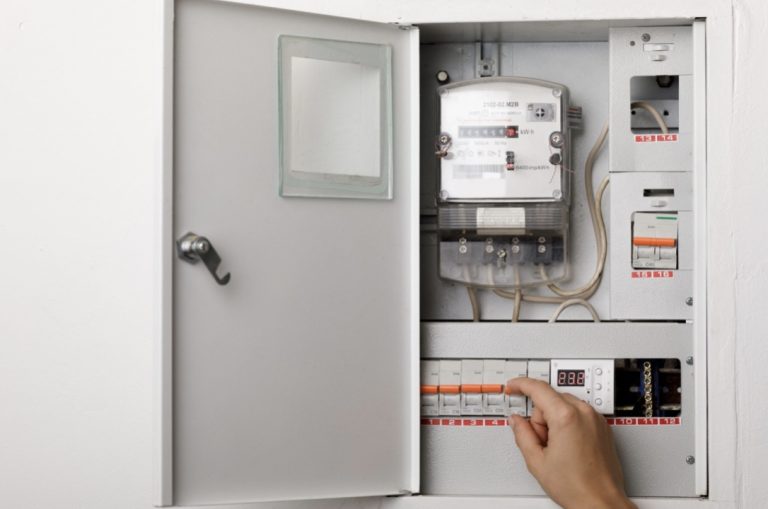Our homes include a lot of safety equipment designed to protect us in case of fire, including smoke detectors and fire extinguishers. But the most important is one you might not even think of: the circuit breaker.
Circuit breakers interrupt electrical flow (e.g. break the circuit) if there’s an overload or short. This prevents shock, electrical fires, and even electrocution. Before anything bad can happen, the breaker cuts the power, making it an essential safety device.
There are varying sizes and types of circuit breakers, from the small ones that protect a single household appliance to the huge ones that protect the power lines feeding an entire town.
Let’s take a look at what circuit breakers are and how circuit breakers work in our homes. These come in three basic circuit breaker types: standard, GFCI, and AFCI. Understanding the difference helps you in identifying the circuit breaker type to ensure you have the right protection for your home’s electrical system.
Story Stages
Standard Breakers
Standard circuit breakers phased out fuses years ago to become the norm for most of the electricity in your home. They should be compatible with the wattage and amperage of any device connected to them.
When there’s an overload or short circuit in the system, the break cuts the current to keep things from overheating. The breaker “trips” and can be reset by flipping the switch back in the breaker panel.
Standard breakers come in two versions: single pole and double pole.
Single-pole breakers are the most commonly used today. It’s a single because it protects one energized wire. They usually can handle 120V and 15 to 30 amps of current.
Double-pole breakers use up two slots in your panel to protect two energized wires. They’re basically two single breakers, but they share a handle and trip mechanism. They provide 120V/240V or 240V to a circuit and up to 200 amps to power large appliances like dryers and water heaters.
For the low-voltage needs of a home, a miniature circuit breaker is often what’s installed. These are simple to use and can handle up to 100 amps. When you need a higher current, you would use a molded case circuit breaker for more than 100 amps.
GFCI Breakers
GFCI stands for ground fault circuit interrupter, and these breakers cut power to an entire circuit when there’s an overload, short circuit, or line-to-ground fault. That last happens when an unwanted path forms between an electrical current and a grounded element.
You might be familiar with the term GFCI if you have a GFCI outlet in your kitchen or bathroom. They’re the ones that have buttons for “TEST” and “RESET” on them that can stop working if your hairdryer overtaxes them.
With GFCI breakers, you don’t need to have special outlets. The breaker has the test button on it and can be reset by flipping the switch just like on standard breakers. In most places, building codes call for one or the other to be used in damp or wet locations like bathrooms, kitchens, basements, or laundry rooms.
You don’t want to have GFCI circuit breakers on circuits with things plugged in that need to run continuously, like your fridge or medical devices. Those can cause the breaker to trip more often than it should.
AFCI Breakers
AFCI stands for arc fault circuit interrupter, and it protects against unintentional electrical discharge in a cord or wiring. That kind of surge or discharge can cause a fire. Arcs often happen due to worn or damaged cords and wiring.
The interrupter can sense the jump made by the charge and its abnormal path. It reacts by instantly disconnecting the damaged circuit from the power. It stops things before the arc can build up enough heat to catch fire.
Standard breakers don’t always trip because they’re designed to respond to a sustained amount of heat rather than a quick surge. You can get a combination standard-AFCI breaker that can also protect your home from low-energy series arcing. These are more common in homes now because they protect downstream branches of the system.
Dual function CAFCI/GFCI breakers are also available. They protect against arc and ground faults, which can save you money by not having to have multiple types of breakers.
National building codes call for AFCI circuit breakers now rather than standard breakers in new homes due to the additional protection provided.
Compatibility
Regardless of which type of breaker you have, it’s important to ensure you get a compatible version should you ever need to replace them. Circuit load determines the size you need, and it’s worth noting that not all breakers are interchangeable even when they are the same size.
Most appliances list their amp rating on them, which can help you calculated the load for a breaker. The safety rating is 80 percent of the maximum load.
Check the inside of your breaker panel door for additional details about which breakers are compatible with your panel. Even if it’s an older panel, you should be able to still find breakers for it.
Know Your Types of Circuit Breakers
Different types of circuit breakers provide different levels of overload protection for your home’s electrical system. You should always use the correct circuit breakers for the type of load you will be using. Identifying the type you currently have helps with ensuring you replace it with the proper size and style.
If you found this guide on circuit breakers helpful, check out our other articles for more information on home repair and DIY projects.

Thanks for the reminder that compatibility is very important when it comes to circuit breaker panel installation. I’m planning to get a whole room in my house rewired soon because its electrical components are a bit dated. As such, it would be best to be very careful when buying electrical equipment that will be used for that.